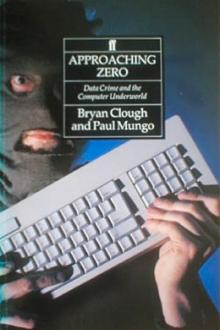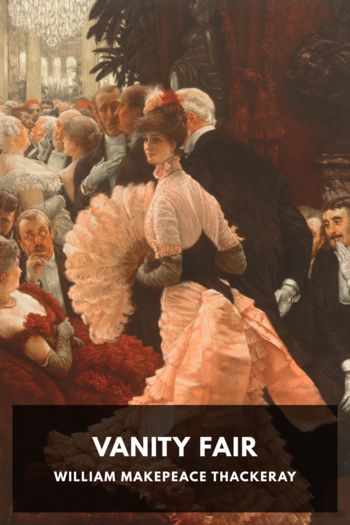Approaching Zero by Paul Mungo (bts book recommendations .txt) 📖

- Author: Paul Mungo
- Performer: -
Book online «Approaching Zero by Paul Mungo (bts book recommendations .txt) 📖». Author Paul Mungo
could dial into phonecompany test switches, to long-distance route operators,
and into conference lines—which meant they could set up their own phreaker
conference calls. Quite simply, possession of a blue box gave the user the same
control and access as a Bell operator. When operator-controlled dialing to
Europe was introduced in 1963, phreakers with MF-ers found they could
directdial across the Atlantic, something ordinary subscribers couldn’t do
until 1970.
The only real flaw with blue boxes was that Bell Telephone’s accounts
department might become suspicious of subscribers who seemed to spend a lot of
time connected to the 1-800 numbers of, say, Holiday Inn or the army recruiting
office and might begin monitoring the line. Phreaking, after all, was
technically theft of
service, and phreakers could be prosecuted under various state and federal
laws.
To get around this, canny phreakers began to use public phone booths,
preferably isolated ones. The phone company could hardly monitor every public
telephone in the United States, and even when the accounts department realized
that a particular pay phone had been used suspiciously, the phreaker would have
long since disappeared.
By the late 1960s blue boxes had become smaller and more portable. The bulky
vacuum tubes mounted on a metal chassis had been replaced by transistors in
slim boxes only as large as their keypads. Some were built to look like
cigarette packs or transistor radios. Cleverer ones—probably used by drug
dealers or bookies—were actually working transistor radios that concealed the
components of an operational blue box within their wiring.
What made Bell’s technology particularly vulnerable was that almost anything
musical could be used to reproduce the tone frequencies. Musical instruments
such as flutes, horns, or organs could be made to re-create Bell’s notes, which
could then be taped, and a simple cassette player could serve as a primitive MF
device. One of the easiest ways to make a free call was to record the tones for
a desired number in the correct sequence onto a cassette tape, go to a phone,
and play the tape back into the mouthpiece. To Bell’s exasperation, some people
could even make free phone calls just by whistling.
Joe Engressia, the original whistling phreaker, was blind, and was said to have
been born with perfect pitch. As a child he became fascinated by phones: he
liked to dial nonworking numbers around the country just to listen to the
recording say, “This number is not in service.” When he was eight, he was
accidentally introduced to the theory of multifrequency tones, though he didn’t
realize it at the time. While listening to an out-of-service tape in Los
Angeles, he began whistling and the phone went dead. He tried it again, and the
same thing happened. Then he phoned his local office and reportedly said, “I’m
Joe. I’m eight years old and I want to know why when I whistle this tune, the
line clicks off.”
The engineer told Joe about what was sometimes known as talk-off, a phenomenon
that happened occasionally when one party to a conversation began whistling and
accidentally hit a 2600cycle tone. That could make the line think that the
caller had hung up, and cause it to go dead. Joe didn’t understand the
explanation then, but within a few years he would probably know more about it
than the engineer.
Joe became famous in 1971 when Ron Rosenbaum catalogued his phreaking skills in
the Esquire article. But he had first come to public attention two years
earlier, when he was discovered whistling into a pay phone at the University of
South Florida. Joe, by this time a twenty-year-old university student, had
mastered the science of multifrequency tones and, with perfect pitch, could
simply whistle the 2600cycle note down the line, and then whistle up any phone
number he wanted to call. The local telephone company, determined to stamp out
phreaking, had publicized the case, and Joe’s college had disciplined him.
Later, realizing that he was too well known to the authorities to continue
phreaking in Florida, he moved on to Memphis, which was where Rosenbaum found
him.
In 1970 Joe was living in a small room surrounded by the paraphernalia of
phreaking. Even more than phreaking, however, Joe’s real obsession was the
phone system itself. His ambition, he told Rosenbaum, was to work for Ma Bell.
He was in love with the phone system, and his hobby, he claimed, was something
he called phone tripping: he liked to visit telephone switching stations and
quiz the company engineers about the workings of the system. Often he knew more
than they did. Being blind, he couldn’t see anything, but he would run his
hands down the masses of wiring coiled around the banks of circuitry. He could
learn how the links were made just by feeling his way through the
connections in the wiring, and in this way, probably gained more knowledge than
most sighted visitors.
Joe had moved to Tennessee because that state had some interesting independent
phone districts. Like many phreakers, Joe was fascinated by the independents—
small, private phone companies not controlled by Bell—because of their
idiosyncrasies. Though all of the independents were linked to Bell as part of
the larger North American phone network, they often used different equipment
(some of it older), or had oddities within the system that phreakers liked to
explore.
By that time the really topflight phreakers were more interested in exploring
than making free calls. They had discovered that the system, with all of its
links, connections, and switches, was like a giant electronic playground, with
tunnels from one section to another, pathways that could take calls from North
America to Europe and back again, and links that could reach satellites capable
of beaming calls anywhere in the world.
One of the early celebrated figures was a New York-based phreaker who used his
blue box to call his girlfriend in Boston on weekends—but never directly.
First he would call a 1-800 number somewhere in the country, skip out of it
onto the international operator’s circuit, and surface in Rome, where he would
redirect the call to an operator in Hamburg. The Hamburg operator would assume
the call originated in Rome and accept the instructions to patch it to Boston.
Then the phreaker would speak to his girlfriend, his voice bouncing across the
Atlantic to a switch in Rome, up to Hamburg, and then back to Boston via
satellite. The delay would have made conversation difficult, but, of course,
conversation was never the point.
Few phreakers ever reached that level of expertise. The community was never
huge—there were probably never more than a few hundred real, diehard phone
phreaks—but it suddenly began to grow in the late 1960s as the techniques
became more widely known. Part of the impetus for this growth was the increased
access to conference lines, which allowed skills and lore to be more widelv
disseminated.
Conference lines—or conference bridges—are simply special switches that allow
several callers to participate in a conversation at the same time. The service,
in those days, was generally promoted to businesses, but bridges were also used
by the telephone company for testing and training. For instance, the 1121
conference lines were used to train Bell operators: they could dial the number
to hear a recording of calls being made from a pay phone, including the pings
of the coins as they dropped, so that they could become familiar with the
system. If two phreakers rang any one of the 1121 training numbers, they could
converse, though the constant pinging as the coins dropped on the recording was
distracting.
Far better were lines like 2111, the internal company code for Telex testing.
For six months in the late 1960s phreakers congregated on a disused 2111 test
line located somewhere in a telephone office in Vancouver. It became an
enormous clubhouse, attracting both neophyte and experienced MF-ers in a
continuing conference call. To participate, phreakers needed only to MF their
way through a 1-800 number onto the Vancouver exchange and then punch out 2111.
The clubhouse may have existed only in the electronic ether around a test
number in a switching office somewhere in Canada, but it was a meeting place
nonetheless.
Joe Engressia’s life in Memphis revolved around phreaker conference lines, but
when Rosenbaum talked to him, he was getting worried about being discovered.
“I want to work for Ma Bell. I don’t hate Ma Bell the way some phone phreaks
do. I don’t want to screw Ma Bell. With me it’s the pleasure of pure knowledge.
There’s something beautiful about the system when you know it intimately the
way I do. But I don’t know how much they know about me here. I have a very
intuitive feel for the condition of the line I’m on, and I think they’re
monitoring me off and on lately, but I haven’t been doing much illegal…. Once
I took an acid trip and was havin these auditory hallucinations … and all
of a sudden I had to phone phreak out of there. For some reason I had to call
Kansas City, but that’s all.”
Joe’s intuition was correct: he was indeed being monitored. Shortly after that
interview, agents from the phone company’s security department, accompanied by
local police, broke into his room and confiscated every bit of
telecommunications equipment. Joe was arrested and spent the night in jail.
The charges against him were eventually reduced from possession of a blue box
and theft of service to malicious mischief. His jail sentence was suspended.
But in return he had to promise never to phreak again—and to make sure he kept
his promise, the local phone company refused to restore his telephone line.2
One of Joe’s friends at that time was a man called John Draper, better known as
Captain Crunch. Like Joe, Draper was interested in the system: he liked to play
on it, to chart out the links and connections between phone switching offices,
overseas lines, and satellites. His alias came from the Quaker Oats breakfast
cereal Cap’n Crunch, which once, in the late 1960s, had included a tiny plastic
whistle in each box as a children’s toy. Unknown to the company, it could be
used to phreak calls.
The potential of the little whistle was said to have been discovered by
accident. The toy was tuned to a high-A note that closely reproduced the
2600cycle tone used by Bell in its long-distance lines. Kids demonstrating
their new toy over the phone to Granny in another city would sometimes find
that the phone went dead, which caused Bell to spend a perplexing few weeks
looking for the source of the problem.
Draper first became involved with phreaking in 1969, when he was twenty-six and
living in San Jose. One day he received what he later described as a “very
strange call” from a man who introduced himself as Denny and said he wanted to
show him something to do with musical notes and phones. Intrigued, Draper
visited Denny, who demonstrated how tones played on a Hammond organ could be
recorded and sent down the line to produce free long-distance calls. The
problem was that a recording had to be made for each number required, unless
Draper, who was an electronics engineer, could build a device that could com-bine the abilities of the organ and the recorder. The man explained that such a
device would be very useful to a certain group of blind kids, and he wanted to
know if Draper could help.
After the meeting Draper went home and immediately wired up a primitive
multifrequency transmitter—a blue box. The device was about the size of a
telephone. Ironically it wouldn’t work in San Jose (where long-distance calls
were still routed through an operator), so Draper had to drive back to San
Francisco to demonstrate it. To





Comments (0)